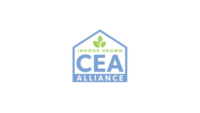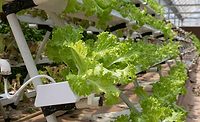The CEA Alliance: Food Safety and More

Image credit: Mark Stebnicki via Pexels
In 2019, a group of indoor leafy greens growers had the foresight to form the CEA Food Safety Coalition. These companies were the first to recognize the need to focus on food safety practices for growing indoor leafy greens. While there had been extensive research and work on field growing practices, indoor growers needed to focus on a very different growing environment. Dr. Jennifer McEntire and I had the pleasure of working with these growers while at the United Fresh Produce Association (now the International Fresh Produce Association).
Fast-forward four years, and food safety is still a paramount focus of these controlled environment agriculture (CEA) companies. But as the CEA sector has grown, so too has the original coalition. In 2022, the coalition became the CEA Alliance, adding multiple workflows and new produce commodities to the group. I am privileged to help these companies grow into a fully formed trade association supporting the CEA sector growing fresh fruits and vegetables.
Today, the CEA Alliance comprises around 40 members, including many of our business partners along the entire supply chain. As we have expanded our grower members, these business partners have also added expertise to the Alliance, enhancing our ability to provide real value to our members.
Food Safety is Still Critical
Even with a name change, food safety remains a core value of the CEA Alliance. From the origin when most food safety audits did not recognize indoor agriculture, we now are covered by most GFSI-benchmarked audits. What we have found missing, however, is comprehensive food safety guidance that can truly help an operator understand the reasons and steps necessary to mitigate risk. We are getting close to publishing a new best practices food safety guidance document that we hope will become its own benchmark for companies in the CEA sector. This is different from an audit that might ask such questions as, "Do you have an appropriate sanitation system?" We want to describe what an effective sanitation system should include.
Beyond food safety, we have an active group working on defining the key characteristics of CEA production. This is the first step in identifying what metrics are most appropriate to measure those characteristics. Today, we see multiple claims across many CEA enterprises, but there is no standardization in how companies are measuring attributes to report and verify those claims. We believe this will become increasingly important as the category grows, since retailers, consumers, and investors will want to see verified data supporting those claims. Many companies will also need to report these metrics in ESG reporting, and standardization across the category will help.
We are focusing on attributes such as water use and quality, energy use, land use, nutrient efficiency, discharge, pesticide use, food waste, year-round employment, and others. All of these characteristics help explain the benefits of CEA production, but they require a standardized system of measurement.
One of the most important new mission areas for the CEA Alliance is public policy. Most trade associations are based in the Washington D.C. area for one primary reason—to be close to the legislative and regulatory bodies that are shaping so much of the business environment in which we operate. Today, the CEA sector now has a voice in the many food and agricultural decisions that are shaped by policymakers.
I believe we are likely at a crossroads in building government support for the CEA sector. Almost every federal and state government leader I have talked with has been strongly supportive of CEA production. They recognize our role in fortifying national food security, food system resilience, climate-smart agriculture, sustainability, and more. Increasingly, government officials recognize that CEA producers are an important part of the domestic fresh food supply chain and a critical backstop against supply chain disruptions triggered by extreme weather and macroeconomic challenges.
Looking Toward a 2023 Farm Bill
The CEA Alliance is leading the charge to make CEA production an integral part of the 2023 Farm Bill now under consideration in Congress. Since the 2018 Farm Bill, commercial-scale CEA producers have grown tremendously, due to their value in the agricultural landscape. However, these producers do not qualify for many of the existing programs authorized by the Farm Bill, which have been primarily focused on outdoor field agriculture. While the 2018 Farm Bill took an important early step to create the USDA Office of Urban Agriculture and Innovative Production, it is now time for Congress to accelerate government support and investment in this important and growing part of U.S. agriculture.
Beyond the Farm Bill, we are also advocating for more meaningful support to producers to invest in innovative technologies and farming systems. The establishment of a federal investment tax credit for innovative farming technologies would be a critical, market-based policy for addressing the high capital costs associated with innovative technologies like robotics, automation, and artificial intelligence. This would fill an important policy gap for the CEA sector and the overall domestic fruit and vegetable industry.
When we look back a few years from now, I believe we will see 2023 as a turning point for our industry. Not only are government leaders beginning to support this critically important part of agriculture, but retailers and consumers are also beginning to appreciate the value of CEA production. They are putting their purchasing decisions behind this important category, and that is the ultimate path to success.
Looking for a reprint of this article?
From high-res PDFs to custom plaques, order your copy today!





